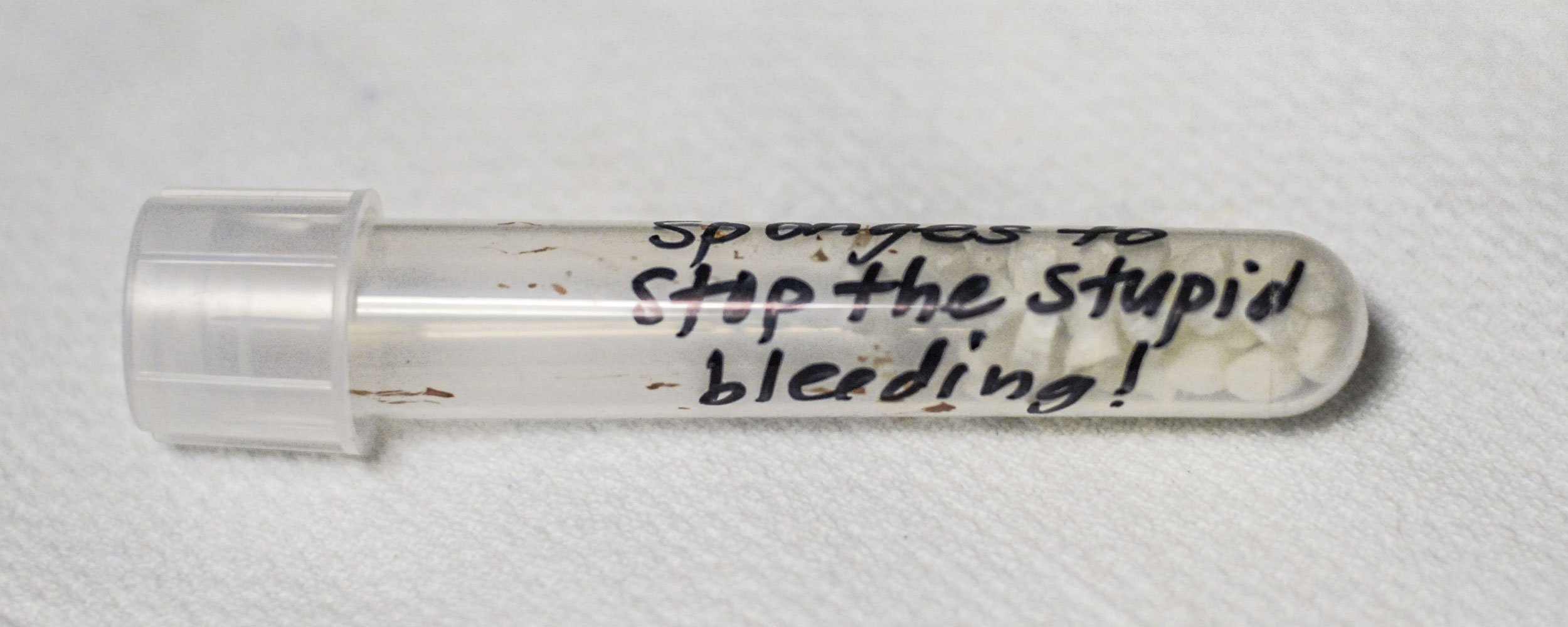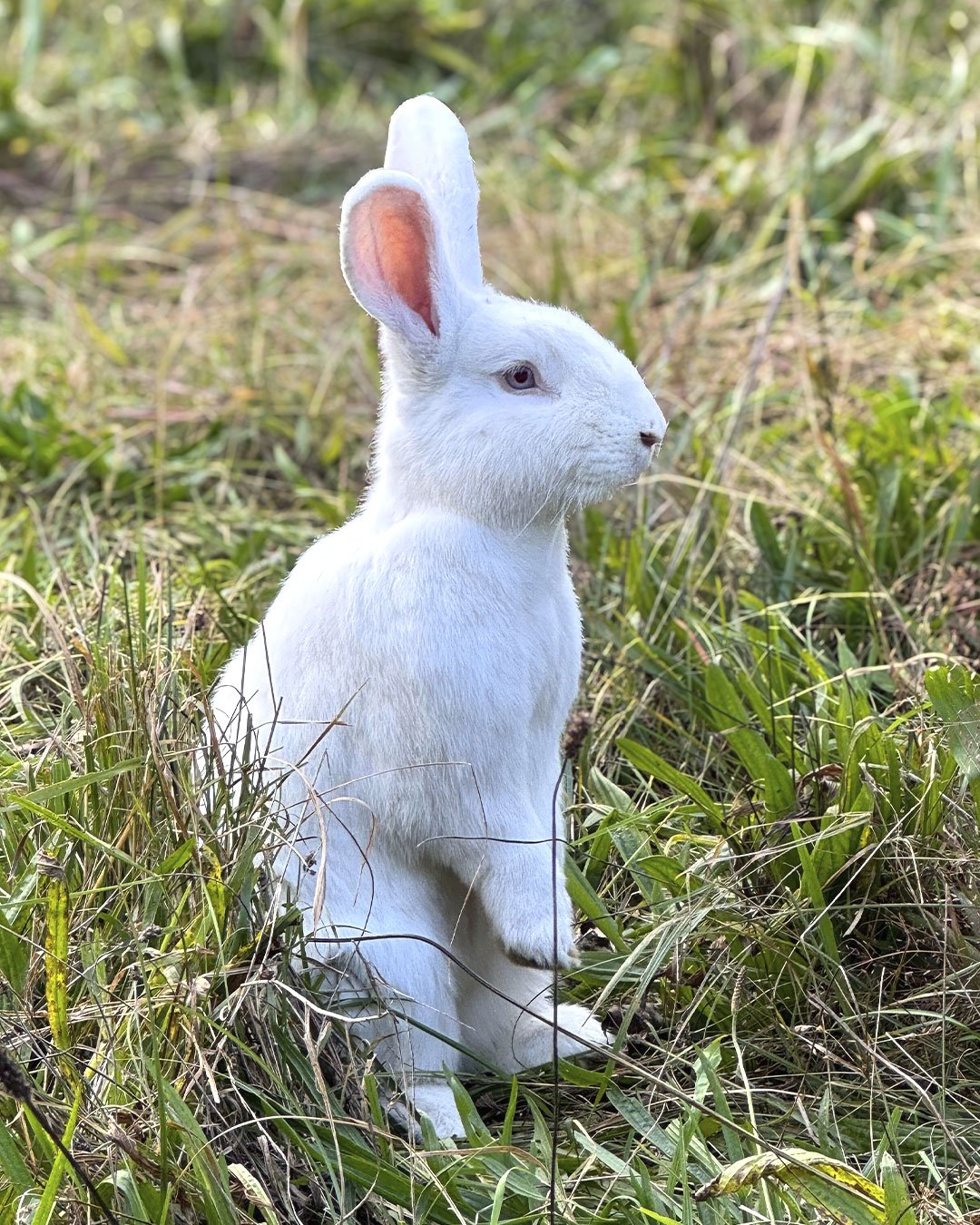Meet Donna and Figaro: Two Rabbits Rescued From Animal Testing
Last month we adopted Donna and Figaro after they were rescued from animal research into our care at Woodstock Farm Sanctuary. Donna and Figaro are sister and brother and were bred to be tested on and studied for cardiology research. When the lab discovered that they didn’t fit the genetic profile needed for the study, Donna and Figaro were going to be killed despite being healthy young rabbits. Luckily, a rescue and advocacy organization named Save the Buns was able to save their lives and remove them from animal research.
As we share and celebrate Donna and Figaro’s rescue and welcome them here, we want to provide visibility into the industry they escaped from – an industry that is pervasive, yet hidden from the public eye. We crafted this article with the help of experts who specialize in advocacy for animals used for animal research. These experts have first-hand experience working in these industries and now advocate for the animals who are bred and used in animal testing.
Let’s hop into facts about rabbits used for animal research and lab testing
Pharmaceutical and cosmetic companies test their products on many different species, but rabbits are among the most common. Although they have significant anatomical differences with humans, rabbits are considered good for testing because they are easy to confine, handle, and breed.
While there are some published statistics that list the number of rabbits currently suffering in labs, it’s hard to pinpoint an accurate number for how many rabbits in total are being used and killed in labs worldwide. The Humane Society International shares estimates that “more than 115 million animals worldwide are used in laboratory experiments every year. But because only a small proportion of countries collect and publish data concerning animal use for testing and research, the precise number is unknown.”
Testing tube found at a research facility. Credit: WeAnimals.
When bred for animal research or lab testing, rabbits will spend their entire lives indoors in usually very tight confinement. Rabbits are subjected to treatments like the Draize method, wherein harsh chemicals are put into their eyes and on their skin while they are restrained. The rabbits are unable to relieve themselves of the pain caused by these chemicals, and many suffer from sores, swelling, blindness, and more. At the end of the study, rabbits are euthanized and disposed of.
“Rabbits are incredibly sensitive beings,” shares Mallory Cormier, a former lab worker who is now the Executive Director of Save the Buns. “As prey animals any type of interaction can be seen as a threat. Living in a laboratory environment is highly stressful for buns. I saw consistent occurrences of rabbits self-mutilating themselves due to stress. Labs are no place for animals but especially such sensitive creatures like buns.”
While the tests themselves are often thought of as the inhumane or cruel part of animal research, the way rabbits and other animals are confined, even before testing begins, is also inhumane.
Rabbit at a testing facility. Credit: WeAnimals.
Figaro enjoying his backyard in sanctuary.
Animal research doesn’t provide reliable results
Is testing on animals really the best way to see if medication will be safe and effective in humans? The answer is no. Even though millions of animals worldwide are used for research and experimentation every year, these studies don’t yield strong results for the medical field. According to the Center for Contemporary Sciences, 90% of drugs that are determined to be safe and effective in animal trials fail in human trials.
With results this unreliable, it begs the question of whether animal testing is actually a barrier to medical innovation, and an outdated practice. How many drugs have failed in animal trials but could have been effective on humans? Breeding animals into a life of confinement and intentionally subjecting them to painful and cruel tests for the sake of limited and often inapplicable information is more than exploitative or inhumane. It’s an unimaginably traumatic existence for the animals, but often for the people who work in these industries too.
“Living in a laboratory environment is highly stressful for buns. I saw consistent occurrences of rabbits self-mutilating due to stress. Labs are no place for animals but especially such sensitive animals like buns.”
The real human impact of animal testing
Madeline Krasno, cofounder of JUSTIFY and former primate lab employee, explains that “when you work in an environment where life is disposable, you either start to believe it’s true or dissociate and emotionally shut down to survive. I did the latter and have spent years battling PTSD as a result.” She goes on to explain that her case isn’t unique. “Since leaving the laboratory, I’ve connected with many former animal research workers... the inhumane treatment of animals in research and the mental health impacts for workers are not unique but standard across the industry.”
The fact that many lab workers experience trauma because of their experience working in animal research speaks volumes about the treatment and lives of the animals in those facilities. At the end of the day, every animal bred and raised in confinement for research is an individual, just like Donna and Figaro. They each deserve a life of dignity, free from exploitation and abuse -- a life where they can express their natural behaviors and emotions.
What you can do
There are plenty of actions you can take today to contribute to a better future for animals like Donna and Figaro. This was just a quick look at animal research. There are more educational resources available on animal testing, and plenty of organizations who are committed to ending animal testing.
Check out a few of these organizations to learn more:
Get involved in animal advocacy! The recent passage of the FDA Modernization Act was a major victory in the fight to end animal testing. Now the FDA’s approval of new drugs can no longer be contingent upon animal exploitation. Your vote and your opinion can make a true difference.
Support your local rescues and sanctuaries. We need your support to save lives and advocate for animals like Donna and Figaro.
Ways to support Woodstock Sanctuary:
Become a Partner in Rescue
Sign up for our monthly newsletter to participate in our advocacy campaigns.
Share your support for Donna and Figaro with a “Don’t Test Me” tee.



